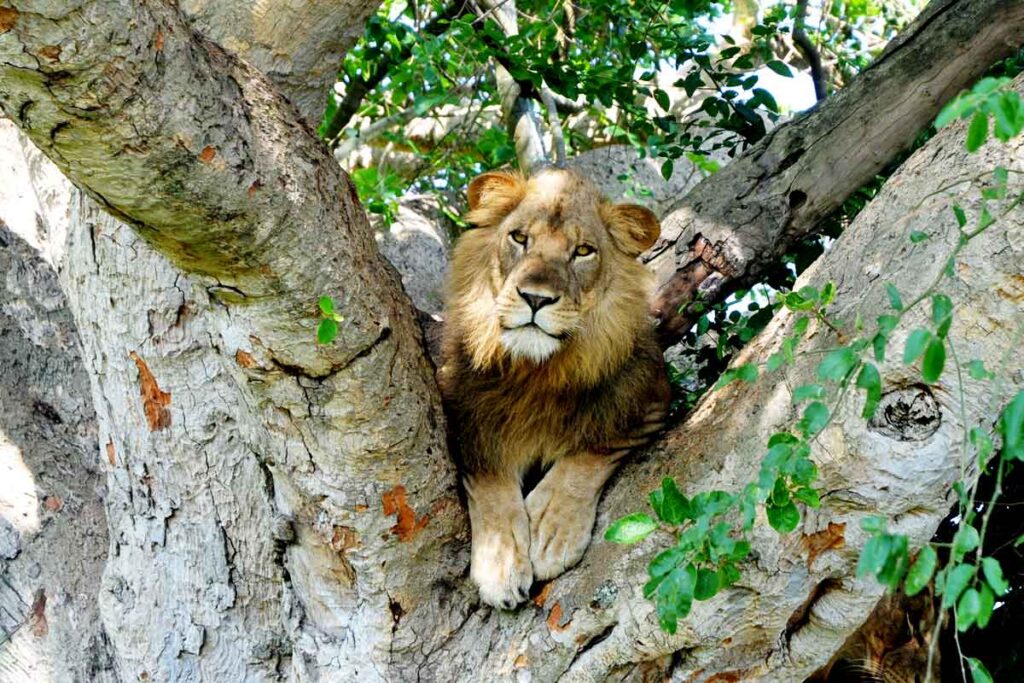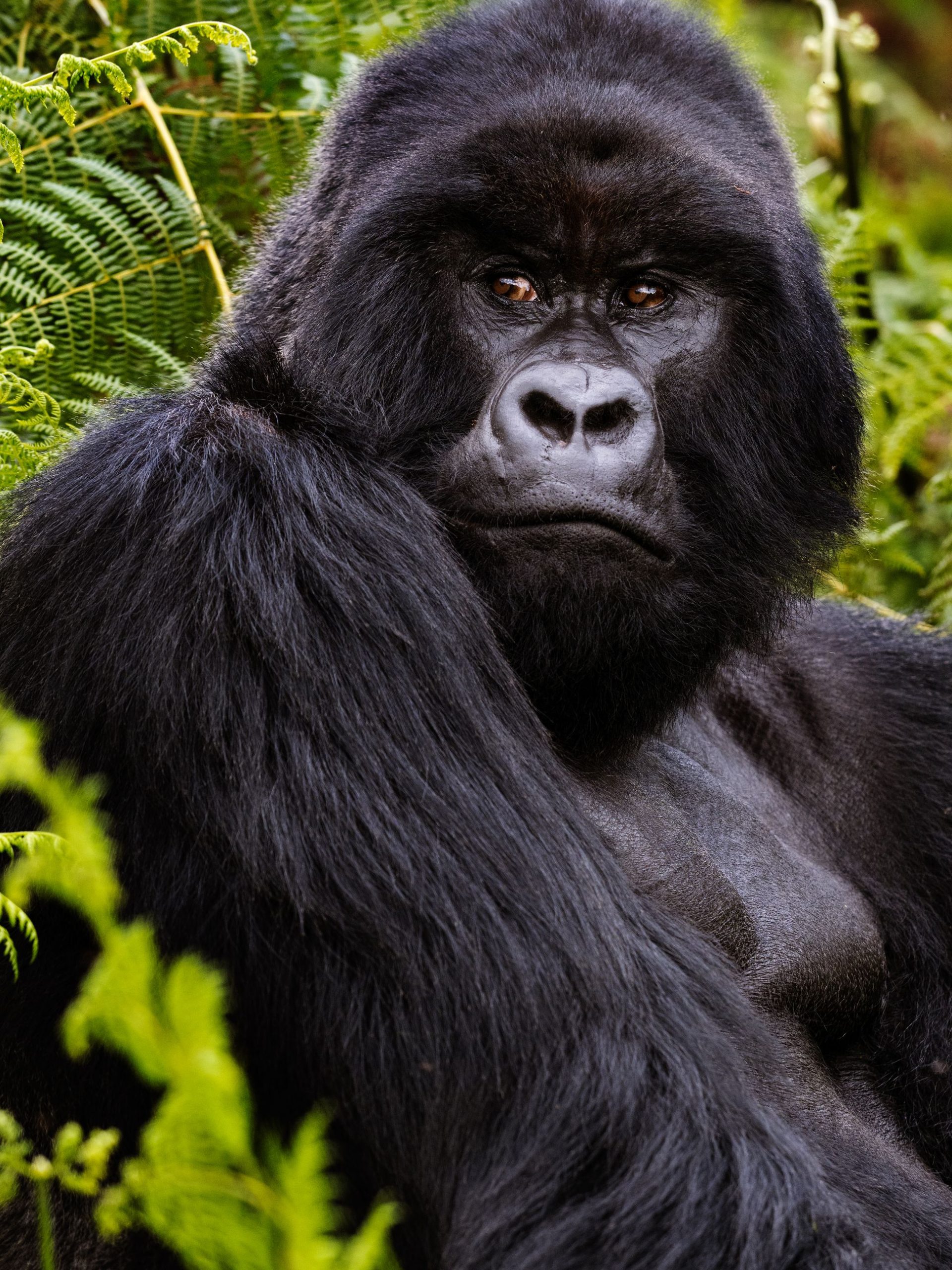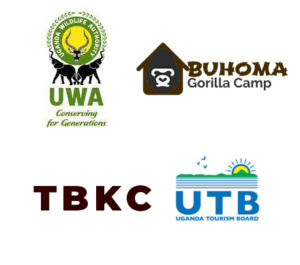
Queen Elizabeth national park is a renowned wildlife reserve in Uganda boasting diverse eco systems including savannah, forests and wetlands. The park is home to a variety of wildlife species and scenic landscapes making it a popular destination for safaris and nature enthusiast.
Queen Elizabeth is situated in southwestern Uganda, spanning districts of Bushenyi, Kasese, Kamwengye and Rukungiri. It is boarded by Lake Edward to the southwest and Rwenzori Mountains to the north, it is part of the western rift valley and is easily accessible from various parts of Uganda.
One of the unique aspects of Queen Elizabeth national park is the incredible bio diversity, housing a wide array of wildlife in different eco systems that includes grasslands, forests and wetlands. The park is renowned for the tree climbing lions and feature Kazinga channel where visitors can enjoy boat safaris amidst diverse bird spices and large concentration of hippos and crocodiles.
About Queen Elizabeth National Park
- Tree climbing lions
The ishasha sector is known for its unique tree climbing lions providing a rare opportunity to witness these big cats lounging in the branches. This behavior is not commonly observed in lions elsewhere making it a unique and fascinating spectacles for visitors.
- Kazinga channel.
Kazinga is a water channel that connects lake Edward to Lake George, take a boa safari on the kazinga channel to observe crocodiles and hippos plus a variety of birds and animals that come to drink from these waters. It offers stunning views and diverse wildlife encounters.
- Game drives.
Explore the park’s diverse savannas on a game drive where you get to encounter animals like elephants, buffaloes, lions, leopards, and antelopes.
- Big four cats.
Queen Elizabeth hosts the big four cats among the big five cats of wildlife, while in this place, you will have chance to encounter these big cats. The big cats are lions, elephants, buffaloes and leopards which is not the case in other national parks.
- Kyambura Gorge.
This deep gorge is home to a population of chimpanzees. Guided treks offer chance to track and observe these primates in their natural habitat, these primates include red tailored monkeys, vervet monkey and black and white colobus monkeys. This place is also known as the ‘’valley of Apes’’, a deep gorge carved by Kyambura river and surrounded by savannah that makes it seem like it’s isolated. You can also enjoy watching birds and spot different species like white faced whistling duck, and African fin foot.
- Mweya peninsular.
Enjoy panoramic views of the park, Rwenzori Mountains and the kazinga channel from this elevated area. This is a prominent geographical fate within the park situated between Lake Edward and Lake George, when you visit, you are rewarded with breathtaking views of the landscape and a vantage spot to clearly observe wildlife like hippos, elephants, and various bird species.
- Game drives
Explore the park’s vast land in an open savannah as you drive around to see and encounter different animals while in their habitat. Some of the animals you can see are African elephants, giraffes, antelopes, lions, leopards, warthogs, hyenas, chimpanzees, giant forest hogs, and Uganda kobs.
- Bird watching.
Queen Elizabeth national park is home to over 600 bird species, the Mweya peninsula r and Kyambura gorge are particular places that reward bird watchers with exceptional spotting of their favorite birds. Some of these birds include African skimmer, papyrus gonolek, saddle billed stork, red chested sunbird, double toothed barbet and Ludwig’s bustard.
- Boat safaris on kazinga channel.
Take an adventurous boat safari trip on kazinga channel to witness hippo, crocodiles and numerous birds and animals. This channel connects Lake Edward to Lake George providing a unique water based perspective of the park’s wildlife.
- Chimpanzee Tracking In Kyambura Gorge.
Embark on a guided trek in Kyambura gore to track, observe and learn about chimpanzees within their natural habitat. Apart from chimps, you get chance to see other primates like red tailored monkeys, olive baboons, vervet monkeys and white and black colored monkeys.
- Tree climbing lions in the Ishasha sector.
The Ishasha sector is located in the southern part of Queen Elizabeth national park known for its unique population of tree climbing lions, making it a distinctive and sought after area for wildlife enthusiasts. The sector still offers different landscapes compared to other parts of the park with acacia trees and savannah grasslands. When you visit this place, you are able to learn and witness the unique behavior of tree climbing lions a phenomenon not commonly observed in other regions.
- Nature walks.
Explore the park on foot with guided nature walks allowing you to appreciate the smaller details of the eco system and potentially encounter various flora and fauna of the surrounding area.
Our Partners
Uganda Tourism Board
.
Uganda Wildlife Authority
.
The Buhoma Gorilla Camp
.
The Bwindi Kids Charity
.
What our customers Say ?
ExcellentBased on 21 reviews
 Headspun2023-07-16Unforgettable Rwanda Emerald tailored our 5 day trip to Rwanda to all our many and frequently changing requests without any fuss. Chris, our driver/guide for the duration, could not have been more helpful and professional
Headspun2023-07-16Unforgettable Rwanda Emerald tailored our 5 day trip to Rwanda to all our many and frequently changing requests without any fuss. Chris, our driver/guide for the duration, could not have been more helpful and professional Nic2022-10-25Amazing holidays! Great holidays! Even my special wishes were included into the planning although time was short. Our guide and driver City Tyson Magezi was caring and responsible. We traveled for four weeks and stayed in different accommodations from hut to tent to amazing hotels.
Nic2022-10-25Amazing holidays! Great holidays! Even my special wishes were included into the planning although time was short. Our guide and driver City Tyson Magezi was caring and responsible. We traveled for four weeks and stayed in different accommodations from hut to tent to amazing hotels. Susanne2022-08-19Just amazing It felt so safe and comfortable and exciting to travel with emerald. Our guide was so caring, so experienced and always friendly and an a great mood. He showed us so many animals included lions and leopards. That was just amazing . We saw wonderful landscapes like waterfalls and had contact to people . No Uganda or Eastern Africa without emerald . I m deep in love with Uganda and will come back as soon as possible.
Susanne2022-08-19Just amazing It felt so safe and comfortable and exciting to travel with emerald. Our guide was so caring, so experienced and always friendly and an a great mood. He showed us so many animals included lions and leopards. That was just amazing . We saw wonderful landscapes like waterfalls and had contact to people . No Uganda or Eastern Africa without emerald . I m deep in love with Uganda and will come back as soon as possible. Jose Murta2022-05-13Memorable Family Trip in Uganda Fantastic Trip that exceeded our expectations! Travelled to Uganda with wife and 2 children (9 and 10y old) for 7 days. Since the start (at planning stage) got a great support from Bob (company owner) and Edmund (our guide) via WhatsApp. They tailored a program to our needs including the unforgettable mountain gorillas hike, general hikes to waterfalls, safari including boat trip to see hipos!! Edmund, our guide, always super polite and the kids enjoyed him a lot! All our hotels, meals included in the package so no hassle on this….we just paid for drinks! The only regret I have is not staying one extra day in the Mburo National Park to explore a bit more ;) Memorable trip with so much nature and a super-humble people that made the experience even more enjoyable!! Super recommend!! The whole family just feeling we need to get back to explore more ;)
Jose Murta2022-05-13Memorable Family Trip in Uganda Fantastic Trip that exceeded our expectations! Travelled to Uganda with wife and 2 children (9 and 10y old) for 7 days. Since the start (at planning stage) got a great support from Bob (company owner) and Edmund (our guide) via WhatsApp. They tailored a program to our needs including the unforgettable mountain gorillas hike, general hikes to waterfalls, safari including boat trip to see hipos!! Edmund, our guide, always super polite and the kids enjoyed him a lot! All our hotels, meals included in the package so no hassle on this….we just paid for drinks! The only regret I have is not staying one extra day in the Mburo National Park to explore a bit more ;) Memorable trip with so much nature and a super-humble people that made the experience even more enjoyable!! Super recommend!! The whole family just feeling we need to get back to explore more ;) Dwayne B2022-05-13Great Experience With Emerald!! It was an amazing experience! My guides Lucky and Hillary made me feel as if I was family and took care of everything I needed. They were very knowledgeable as we trekked to gorillas in Bwindi and a ride a wildlife safari through Queen Elizabeth. I learned so much from them about the animals, the terrain and the surrounding people. They we also incredibly helpful in helping me find activities around Buhoma, where I stayed, all of which were great. By the time I left I knew I had made friends who I will continue to stay in touch with. Can’t wait to come back with my family!
Dwayne B2022-05-13Great Experience With Emerald!! It was an amazing experience! My guides Lucky and Hillary made me feel as if I was family and took care of everything I needed. They were very knowledgeable as we trekked to gorillas in Bwindi and a ride a wildlife safari through Queen Elizabeth. I learned so much from them about the animals, the terrain and the surrounding people. They we also incredibly helpful in helping me find activities around Buhoma, where I stayed, all of which were great. By the time I left I knew I had made friends who I will continue to stay in touch with. Can’t wait to come back with my family! Dávid B2022-05-12Feeding python - 9 lions on a tree - leopard vs. lion We saw all animals and extremely special situations in a short period of time, good organization and friendly guide Paul with lots of knowledge.
Dávid B2022-05-12Feeding python - 9 lions on a tree - leopard vs. lion We saw all animals and extremely special situations in a short period of time, good organization and friendly guide Paul with lots of knowledge. Rachmurta2022-05-10Unforgettable trip! We spent one week in Uganda travelling by the guidance of Gorilla Experience safari. The whole experience were definitely above our expectations. Edmand was a friendly, polite and kind guide the whole time!
Rachmurta2022-05-10Unforgettable trip! We spent one week in Uganda travelling by the guidance of Gorilla Experience safari. The whole experience were definitely above our expectations. Edmand was a friendly, polite and kind guide the whole time! Vit Siv2022-04-22Ultimately Unique Experience of Uganda! It was unbelievable unique experience, one in a life time. Everything right from arrival to minor ditals was taken care of, too service! Itinerary was compiled/tailor to our wishes and needs as well as to include as much activities as possible. Tyson was our guide. He is an amazing guide, but even better person. He did an incredible job to put this all together, and make it all happen. We managed to do everything we wanted and even more. Definitely a trip to remember!!
Vit Siv2022-04-22Ultimately Unique Experience of Uganda! It was unbelievable unique experience, one in a life time. Everything right from arrival to minor ditals was taken care of, too service! Itinerary was compiled/tailor to our wishes and needs as well as to include as much activities as possible. Tyson was our guide. He is an amazing guide, but even better person. He did an incredible job to put this all together, and make it all happen. We managed to do everything we wanted and even more. Definitely a trip to remember!! Emmanuel OKalany2022-01-08A rewarding experience for a family visit to queen Elizabeth National Park My family and I had an excellent guided tour to Queen Elizabeth National Park. The itinerary planning provided was good and the costing of items was realistic. The care and hospitality of the team was excellent. They were also flexible to make time adjustments brought about because of traveling with children
Emmanuel OKalany2022-01-08A rewarding experience for a family visit to queen Elizabeth National Park My family and I had an excellent guided tour to Queen Elizabeth National Park. The itinerary planning provided was good and the costing of items was realistic. The care and hospitality of the team was excellent. They were also flexible to make time adjustments brought about because of traveling with children Gordon Y2021-06-23Trip to Kaiso Tonya Game Reserve The guide/driver was too keen to find out my interests. That way, we always had something to talk abouts. Thank you
Gordon Y2021-06-23Trip to Kaiso Tonya Game Reserve The guide/driver was too keen to find out my interests. That way, we always had something to talk abouts. Thank you



